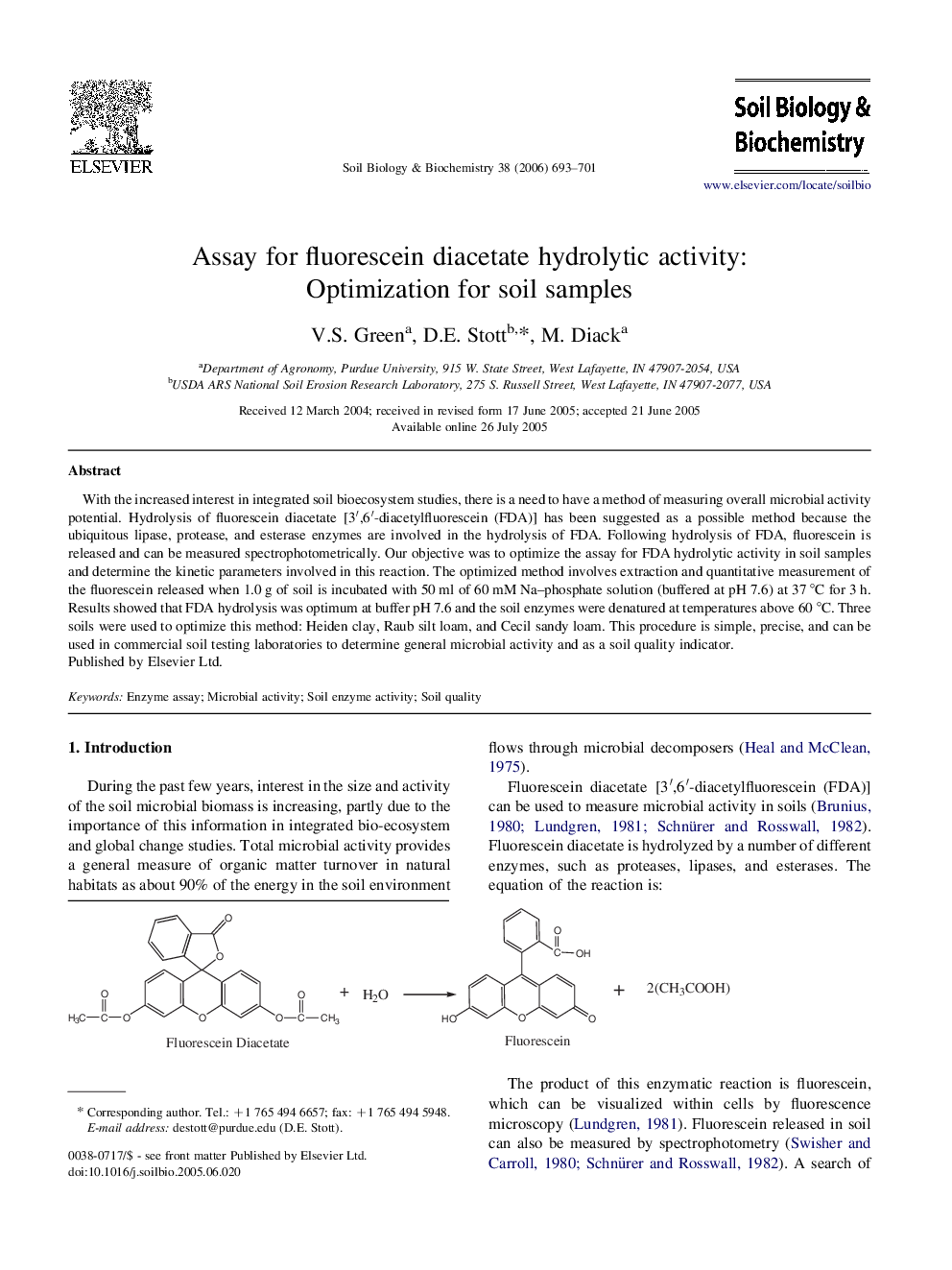| Article ID | Journal | Published Year | Pages | File Type |
|---|---|---|---|---|
| 2026616 | Soil Biology and Biochemistry | 2006 | 9 Pages |
With the increased interest in integrated soil bioecosystem studies, there is a need to have a method of measuring overall microbial activity potential. Hydrolysis of fluorescein diacetate [3′,6′-diacetylfluorescein (FDA)] has been suggested as a possible method because the ubiquitous lipase, protease, and esterase enzymes are involved in the hydrolysis of FDA. Following hydrolysis of FDA, fluorescein is released and can be measured spectrophotometrically. Our objective was to optimize the assay for FDA hydrolytic activity in soil samples and determine the kinetic parameters involved in this reaction. The optimized method involves extraction and quantitative measurement of the fluorescein released when 1.0 g of soil is incubated with 50 ml of 60 mM Na–phosphate solution (buffered at pH 7.6) at 37 °C for 3 h. Results showed that FDA hydrolysis was optimum at buffer pH 7.6 and the soil enzymes were denatured at temperatures above 60 °C. Three soils were used to optimize this method: Heiden clay, Raub silt loam, and Cecil sandy loam. This procedure is simple, precise, and can be used in commercial soil testing laboratories to determine general microbial activity and as a soil quality indicator.
